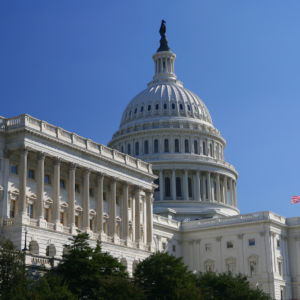Business leaders and legal experts testified before a congressional hearing Wednesday on whether lawmakers should define exactly what joint-employment is.
The Fair Labor Standards Act established the joint-employment standard to determine whether an employer is responsible for the employees of a company it contracts with. Critics have contested the law is overly vague which has allowed for contradictory regulations and case law. The House Education and the Workforce Committee held the hearing to address those concerns.
Former President Barack Obama’s administration caused major concerns in the business community with its efforts to broaden what qualifies as joint employment. The National Labor Relations Board (NLRB) established a new interpretation when deciding labor dispute cases. The Department of Labor (DOL) further solidified the change by issuing its own informal guidance.
“We’re seeking fairness and clarity in determining joint-employment,” Jerry Reese, director of development for Dat Dog Franchise, said during the hearing. “That’s why we’re asking Congress to establish a clear standard.”
Reese adds its now difficult for employers to know how much they can engage the companies they contract with. Franchise owners often provide knowledge and experience to make sure the companies they contract their brand name to are successful. Reese notes under the new standard it’s unclear when that ventures into joint-employment.
“The franchisor and franchisee relationship has been severely harmed,” Mary Kennedy Thompson, chief operating officer of Dwyer Group, testified. “This unlimited joint-employment risks the future of franchises.”
Thompson, who spoke on behalf of the International Franchise Association (IFA), also expressed the need for lawmakers to draft legislation that establishes a clear line.
Others contest the new standards don’t violate existing case law and are fair. National Employment Law Project Counsel Catherine Ruckelshaus adds the standard works and is helping to ensure employers don’t pass their employment responsibilities onto the companies they contract with.
“All joint-employment means is multiple companies can be considered responsible for the same employees,” Ruckelshaus testified. “It imposes compliance by making sure employers can’t outsource their responsibilities.”
Boston University Law Professor Michael Harper agrees that current interpretations of the law are working fine. He warns any new legislation may cause even more uncertainty since courts would likely have to start from the beginning and interpret the new law. Critics counter the case law is what is causing the current problems.
“Today we have too many tests that are overly complex,” FedEx Ground Vice President Richard Heiser said during the hearing. “And we have too much distracting litigation.”
The NLRB first brought about its updated interpretation by changing how it ruled on joint-employment cases in 2015. The board argued the standard needed to be updated to better reflect current law and the revised interpretation actually addressed the patchwork of conflicting rules.
President Donald Trump has already begun the process of rolling back changes brought about by the last administration. Labor Secretary Alexander Acosta announced that the department would be withdrawing from its earlier informal guidance on the updated standard.
Employers take on a lot of legal burdens and costs when they become joint-employers. The updated standard could potentially impact any group of businesses that contract together. Franchises were of particular concern since their business model relies on large corporations contracting with many small businesses.
Business leaders and industry groups have testified against the updated standard many times before. This time there is more hope that their concerns will be addressed. Congressional Republicans have been opposed to the new standard, as well, and are now in a position to do something with control of the White House.
The joint-employment standard is determined based on how much control one employer exerts over the employees of another company. Critics contest the updated standard is far too vague to reasonably determine whether an employer is exerting too much control.
The NLRB revisited the joint-employment standard during a handful of labor dispute cases in recent years. The Browning-Ferris Industries case set the precedent for the new standard when it was decided in 2015. The board declared Browning-Ferris a joint-employer with Leadpoint Business Services.
Ruckelshaus notes the board made the decision because Browning-Ferris controlled employment conditions like wages. Leadpoint Business Services was negotiating for a new union contract at the time. The decision decided that Browning-Ferris had to be at the negotiating table to discuss the employment terms it controlled.
Business coalitions have launched a number of campaigns to defeat the updated standard. The IFA has spoken with federal lawmakers, launched media campaigns, testified before congressional hearings, supported lawsuits, and backed opposition efforts from the business community. The National Restaurant Association has filed several legal briefs during key joint-employment cases. The U.S. Chamber of Commerce has issued reports highlighting why the updated standard is dangerous for businesses.
Congress could upend the updated joint-employment standard by drafting legislation that clarifies its original intent or creates a new standard. The NLRB could soon be in a position to kill the new standard as well. Republicans will gain majority control of the five-member board once Trump’s nominees are approved.

